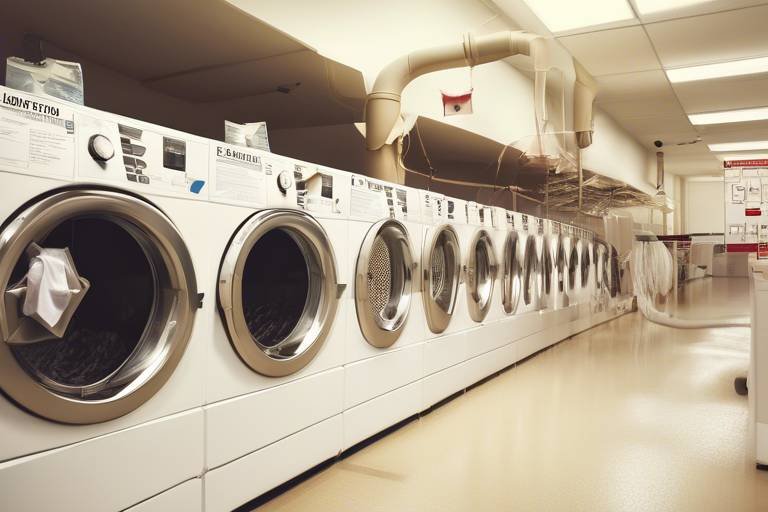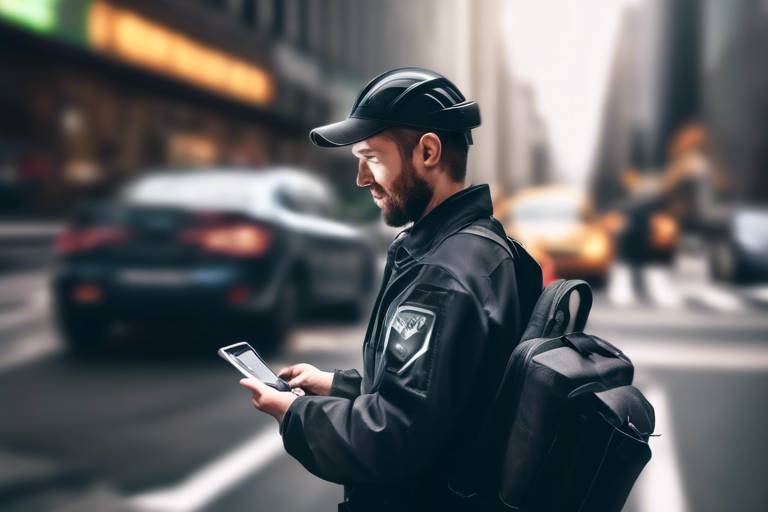Personal Safety and Restful Sleep: The Connection
Exploring the intricate relationship between personal safety and quality sleep reveals a fascinating connection that many of us may overlook. Imagine trying to drift off to sleep while a storm rages outside, or the unsettling sounds of the city echo through your window. It’s nearly impossible to achieve that coveted state of relaxation when your mind is preoccupied with safety concerns. The truth is, our feelings of security profoundly impact our ability to achieve restorative rest and overall well-being. When we feel safe, we can let go of our worries and embrace the tranquility needed for a good night's sleep. This article dives deep into how personal safety intertwines with our sleep patterns, affecting everything from our mental health to our physical recovery.
Understanding personal safety is crucial for mental peace. It’s not just about physical safety; it encompasses emotional and psychological wellbeing as well. Think of safety as a three-legged stool: if one leg is wobbly, the whole thing can topple over. Physical safety involves protection from harm—whether it's crime, accidents, or environmental hazards. Emotional safety, on the other hand, relates to feeling secure in relationships and environments where we spend time. Finally, psychological safety is about having a stable mental state, free from anxiety and fear. Together, these aspects create a secure environment where individuals can thrive. When we feel safe, our minds can focus on relaxation instead of survival, paving the way for improved sleep quality.
Sleep is essential for health and well-being, acting as a foundation for our daily functioning. During sleep, our bodies undergo a series of biological processes that are vital for recovery and rejuvenation. The stages of sleep are like a symphony, each playing a unique role in our overall health. From the light sleep that helps us transition into deeper states to the restorative deep sleep and the vivid dreaming of REM sleep, each stage serves a purpose. Quality sleep affects everything from our physical health—like immune function and recovery from illness—to our mental health, influencing mood, cognition, and emotional regulation. The connection between sleep and personal safety becomes even clearer when we consider how inadequate sleep can lead to increased anxiety and a heightened sense of vulnerability.
Different stages of sleep serve unique functions, and understanding these can illuminate how they impact our feelings of safety. For instance, REM (Rapid Eye Movement) sleep is crucial for emotional processing. During this stage, our brains work through the events of the day, helping us make sense of our experiences. If this stage is disrupted, we may find ourselves more anxious and stressed, which can lead to a distorted perception of personal safety. Conversely, non-REM sleep is vital for physical recovery. It’s during this stage that our bodies repair tissues, build bone and muscle, and strengthen the immune system. Adequate non-REM sleep contributes to overall health, making us feel more secure and less vulnerable to external threats.
REM sleep plays a vital role in processing emotions. When we experience disturbances in REM sleep, it can lead to heightened anxiety and stress levels. Imagine trying to navigate through a foggy landscape; that’s what it feels like when your emotions are unprocessed due to lack of REM sleep. This fog can cloud our judgment and affect how safe we feel in our environments. The connection between emotional health and sleep is undeniable; when we don’t get enough REM sleep, our ability to cope with stress diminishes, making us feel less secure in our surroundings.
Non-REM sleep is essential for physical recovery. It’s during this stage that our bodies undergo significant restorative processes. Adequate non-REM sleep contributes to muscle recovery, tissue growth, and overall physical health. When we are well-rested, we feel more energized and capable of tackling the day ahead. This sense of physical well-being directly impacts our perception of safety. When our bodies are strong and our minds clear, we are more equipped to handle potential threats and challenges, reinforcing our feelings of security.
Sleep disorders can significantly impact personal safety. Conditions like insomnia, sleep apnea, and restless leg syndrome not only disrupt sleep quality but also contribute to feelings of vulnerability. For example, individuals with sleep apnea may experience frequent awakenings, leading to daytime fatigue and impaired cognitive function. This can create a cycle of anxiety about safety, as they might feel less alert and more prone to accidents. Understanding these disorders and their symptoms is crucial in addressing the broader implications for personal safety and well-being.
A conducive sleep environment is paramount for enhancing rest quality. Creating a safe and calming bedroom atmosphere can significantly promote restful sleep. Consider your bedroom as a sanctuary—a place where you can escape the chaos of the outside world. This means eliminating distractions like noise and light, which can easily disrupt your sleep cycle. A few simple changes can make a world of difference. For instance, blackout curtains can help block out unwanted light, while white noise machines can drown out disruptive sounds. It’s all about crafting a space that feels secure and inviting, allowing you to drift off into a peaceful slumber.
Noise and light can be significant disruptors of sleep. To create a tranquil sleep environment, consider implementing strategies like using earplugs or a white noise machine to mask disruptive sounds. Additionally, blackout curtains can effectively minimize light pollution, creating a darker and more conducive atmosphere for sleep. These small adjustments can transform your bedroom into a peaceful haven, promoting deeper and more restorative sleep.
Modern technology can improve personal safety significantly. From smart home devices that enhance security to sleep apps that monitor your sleep patterns, technology can play a crucial role in promoting both safety and restful sleep. For example, smart locks can provide peace of mind, knowing that your home is secure while you sleep. Similarly, sleep tracking apps can help you understand your sleep patterns and make adjustments to improve your rest quality. Embracing these innovations can contribute to a greater sense of safety, allowing you to relax and enjoy a good night’s sleep.
Q: How does personal safety affect sleep quality?
A: Personal safety plays a crucial role in sleep quality. When individuals feel secure, they are more likely to relax and fall asleep peacefully. Conversely, feelings of insecurity can lead to anxiety, making it difficult to achieve restorative sleep.
Q: What are the stages of sleep and their significance?
A: Sleep is divided into REM and non-REM stages. REM sleep is essential for emotional processing, while non-REM sleep is vital for physical restoration. Both stages are crucial for overall health and well-being.
Q: What can I do to create a safe sleep environment?
A: To create a safe sleep environment, consider reducing noise and light pollution, using comfortable bedding, and ensuring your bedroom feels secure. Implementing smart technology can also enhance safety.
Q: How do sleep disorders impact personal safety?
A: Sleep disorders can lead to daytime fatigue and impaired cognitive function, increasing the risk of accidents and reducing feelings of safety. Addressing sleep disorders is essential for overall well-being.
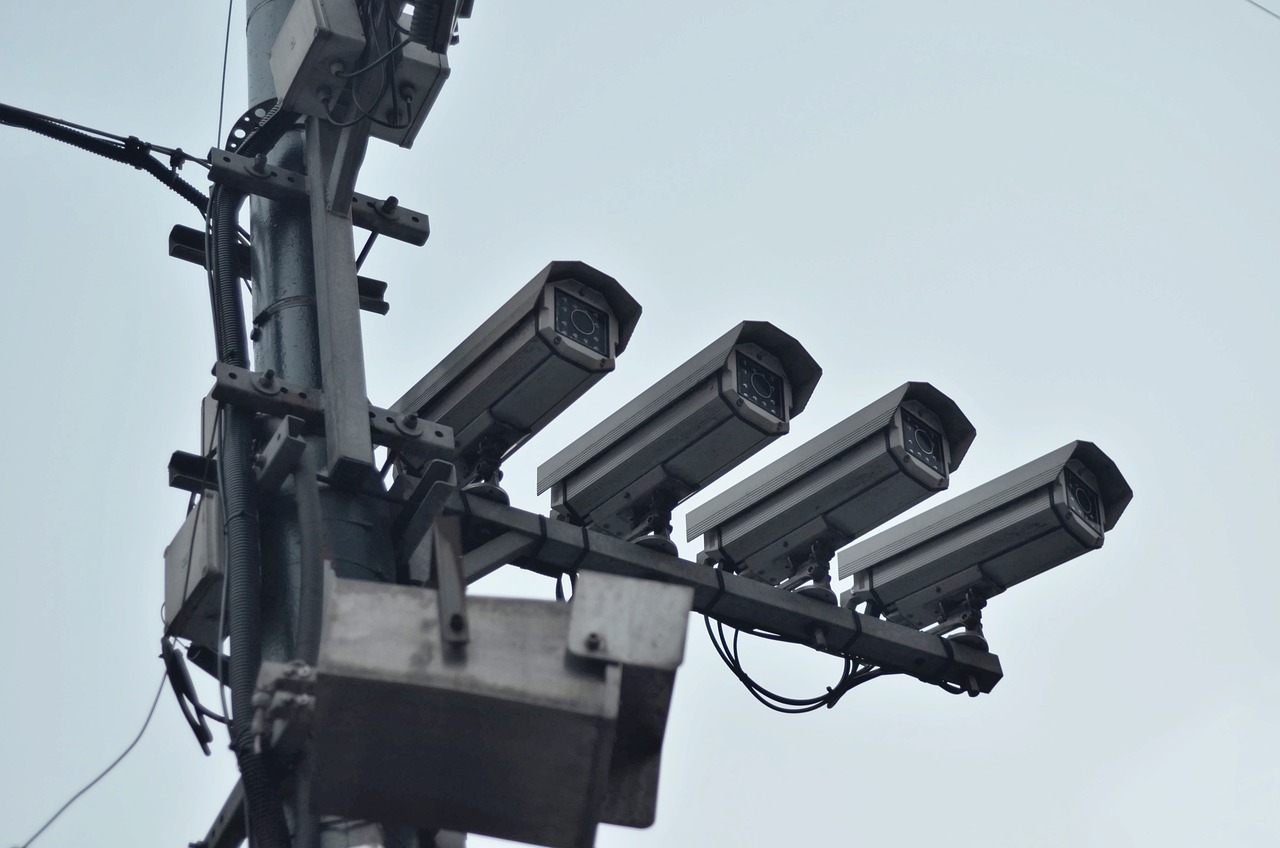
The Importance of Personal Safety
Understanding personal safety is crucial for achieving mental peace and overall well-being. Imagine trying to drift off to sleep while your mind is racing with worries about your safety; it’s like trying to relax on a roller coaster—your body just won’t let you! Personal safety encompasses a variety of factors, including physical, emotional, and psychological elements that contribute to a secure environment. When we feel safe, our bodies can better relax, allowing us to enter the deep stages of sleep that are essential for recovery and rejuvenation.
Physical safety involves being protected from harm, whether it’s from crime, accidents, or natural disasters. But it doesn’t stop there. Emotional safety is about feeling secure in our relationships and environments, free from judgment or emotional harm. Psychological safety, on the other hand, relates to our mental state—how we perceive threats and manage our fears. All these aspects are interconnected, creating a web of safety that influences our daily lives and, importantly, our sleep quality.
Consider this: when you walk into your home after a long day, the feeling of locking the door behind you can trigger a wave of relief. This simple act signifies that you are now in a space where you can let your guard down. However, if that feeling of safety is compromised—say, due to a recent burglary in your neighborhood—your mind might be preoccupied with anxiety, making it difficult to unwind and fall asleep. Thus, the relationship between personal safety and sleep is not just a matter of comfort; it’s fundamentally linked to our mental health.
To illustrate the significance of personal safety, consider the following aspects:
- Safe Neighborhood: Living in a community with low crime rates contributes to a sense of security.
- Supportive Relationships: Emotional safety from friends and family can alleviate stress and anxiety.
- Personal Awareness: Being aware of your surroundings can enhance your feelings of safety.
In summary, personal safety is not just about avoiding physical harm; it’s a holistic concept that includes emotional and psychological dimensions. When we nurture a safe environment, we pave the way for better sleep, which in turn enhances our overall health and well-being. As we explore the connection between personal safety and sleep, it becomes clear that prioritizing our safety can lead to profound improvements in our quality of life.
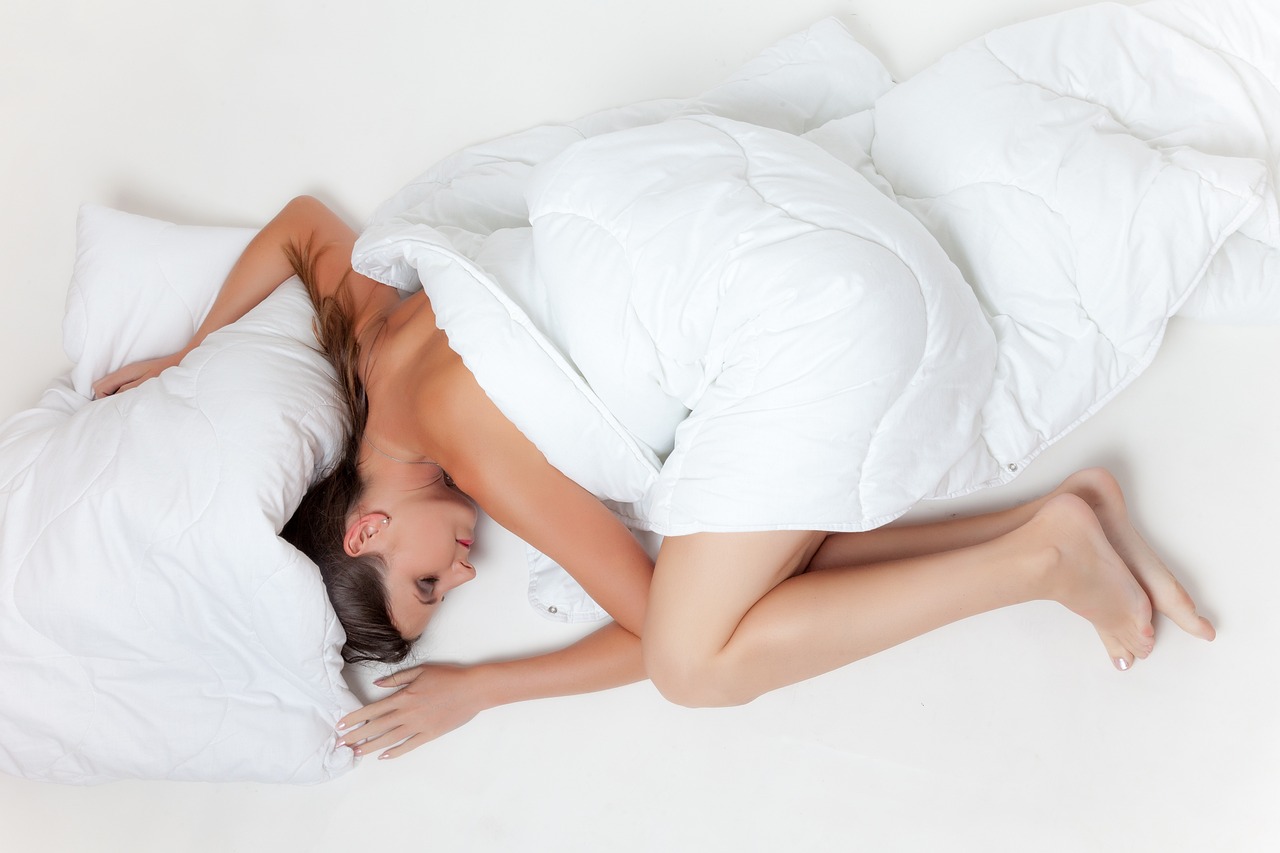
The Science of Sleep
Sleep is not just a passive state of rest; it’s a complex biological process that plays a crucial role in our overall health and well-being. When we sleep, our bodies undergo various restorative processes that are essential for physical recovery, cognitive function, and emotional stability. Understanding the science behind sleep can help us appreciate its significance and the impact it has on our daily lives. So, what exactly happens when we drift off into dreamland?
During sleep, our bodies cycle through different stages, each with its unique functions and benefits. These stages can be broadly categorized into two main types: REM (Rapid Eye Movement) sleep and non-REM sleep. Each stage is characterized by distinct physiological changes and plays a vital role in maintaining our health.
As we sleep, we progress through various stages in a cycle that typically lasts about 90 minutes. On average, a person experiences four to six of these cycles each night. The stages can be divided into:
- Non-REM Sleep: This stage consists of three phases, each deeper than the last. It is during this time that our bodies focus on physical restoration, healing, and growth.
- REM Sleep: This stage is associated with dreaming and is crucial for emotional regulation and cognitive functions.
Both REM and non-REM sleep are essential for cognitive function and emotional regulation. For instance, non-REM sleep is where the body repairs tissues and strengthens the immune system, while REM sleep is critical for processing memories and emotions. The balance between these stages is vital; disruptions can lead to a host of issues, including impaired cognitive abilities and increased stress levels.
Have you ever woken up from a dream feeling an intense emotion? That’s the power of REM sleep. During this stage, our brains are highly active, processing emotions and consolidating memories. If REM sleep is disrupted, it can lead to heightened anxiety and stress, creating a vicious cycle that negatively impacts our perception of personal safety. Imagine trying to navigate a dark room while feeling anxious; it’s nearly impossible to feel secure. This is a direct result of insufficient REM sleep, which can cloud our judgment and increase feelings of vulnerability.
On the flip side, non-REM sleep is where the magic of physical restoration occurs. This stage is crucial for muscle repair, tissue growth, and the release of growth hormones. When we don’t get enough non-REM sleep, our bodies can’t recover fully, leading to fatigue and a weakened immune system. Think of it as charging your phone overnight; without that charge, it’s not going to function properly the next day. Similarly, without adequate non-REM sleep, our bodies and minds struggle to operate at their best, leaving us feeling unsafe and unprepared for the challenges of the day.
Sleep disorders, such as insomnia, sleep apnea, and restless leg syndrome, can significantly impact our sense of personal safety. These conditions often lead to disrupted sleep patterns, leaving individuals feeling tired, irritable, and on edge. This lack of restorative sleep can amplify feelings of insecurity and anxiety, creating a feedback loop that further exacerbates sleep issues. Understanding these disorders is crucial for addressing their impact on both health and safety.
In summary, the science of sleep reveals that the quality and quantity of our sleep have profound effects on our physical health, emotional well-being, and sense of safety. By prioritizing sleep and understanding its stages, we can take actionable steps towards improving our overall quality of life.
- How many hours of sleep do adults need? Most adults require between 7 to 9 hours of sleep per night for optimal health.
- What are the signs of sleep deprivation? Common signs include fatigue, irritability, difficulty concentrating, and an increased risk of accidents.
- How can I improve my sleep quality? Establishing a regular sleep schedule, creating a calming bedtime routine, and optimizing your sleep environment can significantly enhance sleep quality.

Sleep Stages and Their Impact
When we dive into the world of sleep, we uncover a fascinating tapestry woven from various stages, each with its unique role in our overall health and well-being. Sleep isn’t just a passive state; it’s an active process where our bodies and minds engage in crucial repair and rejuvenation. Imagine your body as a smartphone—just like it needs to recharge to function optimally, so do we. The different stages of sleep can be likened to various charging modes, each contributing to our overall battery life in distinct ways.
There are primarily two categories of sleep: REM (Rapid Eye Movement) and Non-REM. Each category is subdivided into stages that serve specific functions. Non-REM sleep is further broken down into three stages: N1, N2, and N3, while REM sleep typically occurs after the first cycle of Non-REM sleep. Let’s explore these stages and their impacts:
| Stage | Duration | Impact |
|---|---|---|
| N1 (Light Sleep) | 5-10 minutes | Transition from wakefulness to sleep, easy to awaken. |
| N2 (Moderate Sleep) | 20 minutes | Body temperature drops, heart rate slows, prepares for deep sleep. |
| N3 (Deep Sleep) | 20-40 minutes | Restorative sleep, essential for physical recovery and growth. |
| REM Sleep | 10-20 minutes | Dreaming occurs; crucial for emotional regulation and memory consolidation. |
During N1, you might feel like you're drifting in and out of consciousness, which is perfectly normal. It’s the gateway to deeper sleep, where your body begins to relax. In N2, your heart rate and breathing stabilize, allowing your body to prepare for the deeper stages of sleep. This stage is where the magic of memory consolidation begins, helping you retain what you've learned and experienced during the day.
Then we dive into N3, also known as deep sleep, which is the holy grail of restorative sleep. This is when your body repairs tissues, builds bone and muscle, and strengthens the immune system. It’s like your body’s maintenance crew coming in to fix everything up after a long day. Skipping out on this stage can lead to feelings of fatigue and decreased cognitive function, which can directly impact your sense of safety and security in your waking life.
Finally, we enter REM sleep, often referred to as the dreaming stage. Here, your brain becomes highly active, and you might find yourself lost in vivid dreams. This stage is crucial for emotional processing. Think of it as your mind’s way of organizing a cluttered desk; it sorts through the emotional baggage of the day, helping you to cope with stress and anxiety. If REM sleep is disrupted, it can lead to increased feelings of vulnerability and anxiety, which can significantly affect your perception of personal safety.
In summary, the interplay between these sleep stages is vital for not just physical restoration but also emotional well-being. Understanding these stages helps us appreciate why a good night’s sleep is so essential for feeling safe and secure in our daily lives. So, the next time you find yourself tossing and turning, remember that your body is trying to navigate through these important stages. Prioritizing quality sleep can enhance your overall sense of safety and well-being.
- What is the most important sleep stage? Each stage is important, but REM sleep is crucial for emotional processing and memory consolidation.
- How can I improve my sleep stages? Maintain a consistent sleep schedule, create a relaxing bedtime routine, and minimize distractions in your sleep environment.
- What happens if I don’t get enough deep sleep? Lack of deep sleep can lead to physical fatigue, weakened immune response, and impaired cognitive function.
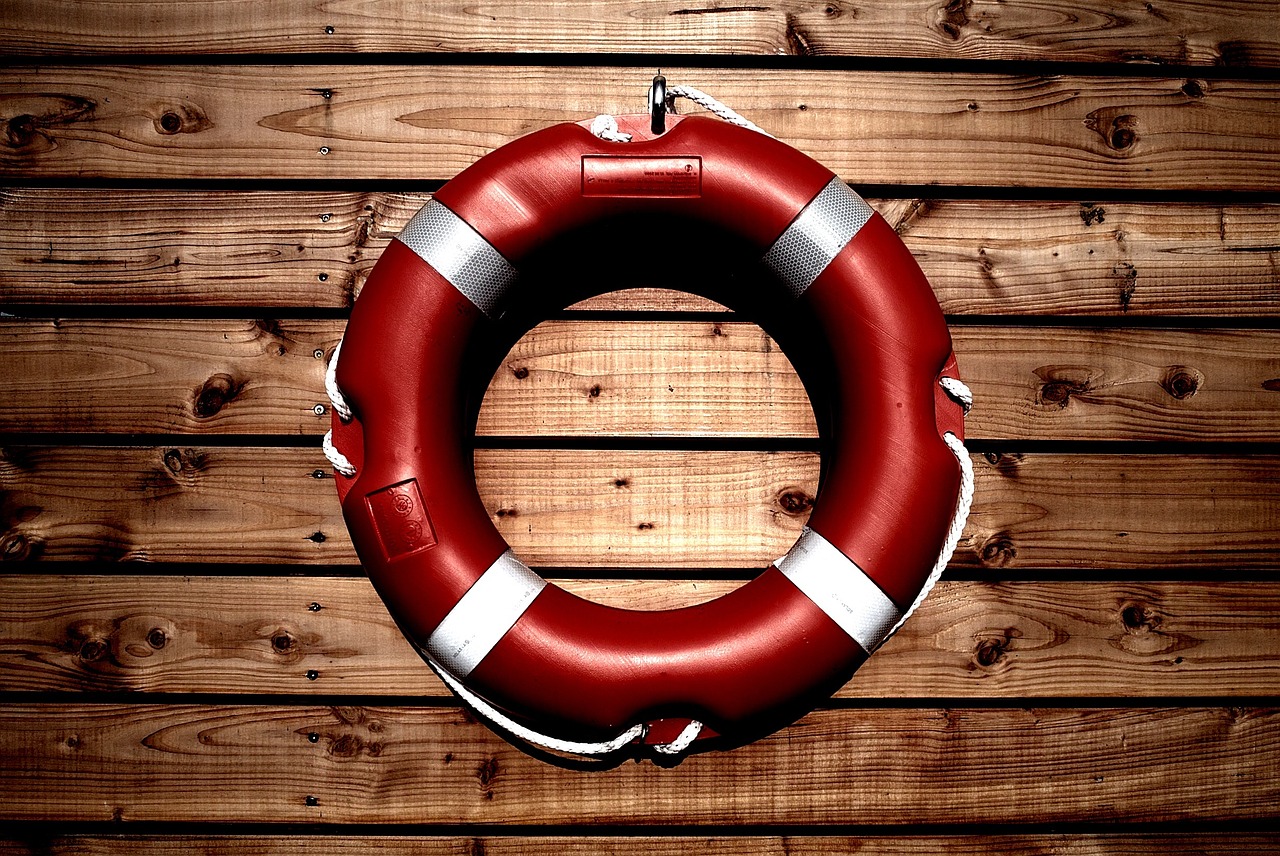
REM Sleep and Emotional Processing
REM (Rapid Eye Movement) sleep is a fascinating phase of our nightly slumber that plays a critical role in how we process emotions. During this stage, our brains are highly active, almost resembling wakefulness, which is why it’s often associated with vivid dreaming. But what does this mean for our emotional health? Well, REM sleep is believed to be the brain's way of sorting through the day’s experiences, helping us to process and regulate our emotions effectively. Imagine it as a nightly therapy session where your mind sifts through the emotional debris of the day, helping you make sense of it all.
Research has shown that disturbances in REM sleep can lead to a host of emotional issues. For instance, individuals who experience insufficient REM sleep often report higher levels of anxiety and stress. This is because the brain misses out on the opportunity to process emotions fully, leading to a buildup of unresolved feelings that can manifest as irritability or mood swings. It's akin to trying to solve a puzzle without all the pieces; the picture just doesn’t come together, leaving you feeling frustrated and overwhelmed.
Moreover, the relationship between REM sleep and emotional processing is not just a one-way street. Emotional experiences can also influence the quality of REM sleep. For example, individuals who are going through significant life stressors or traumatic events may find their REM sleep disrupted. This creates a vicious cycle where poor emotional health leads to poor sleep quality, which in turn exacerbates emotional distress. In essence, it’s a delicate balance that significantly impacts our overall sense of safety and well-being.
To illustrate the importance of REM sleep in emotional processing, consider the following table that summarizes key findings from recent studies:
| Study | Findings |
|---|---|
| Walker et al. (2017) | Individuals with disrupted REM sleep showed increased anxiety levels. |
| Goldstein & Walker (2014) | REM sleep is crucial for emotional regulation and memory consolidation. |
| Hirshkowitz et al. (2015) | Quality REM sleep correlates with better emotional resilience. |
In conclusion, prioritizing REM sleep is essential for maintaining emotional balance. By ensuring that we achieve adequate REM sleep, we not only enhance our emotional processing abilities but also foster a greater sense of safety and security in our daily lives. So, the next time you hit the pillow, remember that your dreams are more than just whimsical tales; they are your mind’s way of keeping you emotionally healthy and grounded.

Non-REM Sleep and Physical Restoration
When we talk about sleep, we often focus on the dreamy, vivid experiences of REM sleep, but let’s not overlook the crucial role of Non-REM (NREM) sleep. This phase of sleep is like the unsung hero of our nightly rest. It’s during NREM sleep that our bodies engage in significant processes that promote physical restoration. Imagine your body as a smartphone; just like it needs to recharge to function optimally, our bodies require NREM sleep to rejuvenate and repair.
NREM sleep is divided into three stages, each serving a unique purpose. The first stage is light sleep, where you drift in and out of consciousness. The second stage is where your heart rate slows, and your body temperature drops, preparing you for deeper sleep. The third stage, often referred to as deep sleep, is where the real magic happens. This is the stage where our bodies work hard to repair muscles, synthesize proteins, and release growth hormones. In essence, it’s like your body’s very own repair shop.
During deep NREM sleep, your body undertakes essential maintenance tasks that are vital for overall health. For instance, it helps in muscle recovery after a long day, repairs tissues, and even strengthens your immune system. Think of it as your body’s nightly renovation project, where it fixes what’s broken and prepares you for the challenges of the next day. Without adequate deep sleep, you might find yourself feeling sluggish, irritable, and unable to perform at your best. It’s like trying to drive a car with a flat tire; you can make it work, but it won’t be smooth sailing.
Moreover, studies have shown that a lack of NREM sleep can lead to increased levels of stress hormones, which can affect how safe and secure we feel in our environment. When our bodies are not well-rested, we may become more sensitive to stressors, leading to heightened anxiety and a distorted perception of our surroundings. This cycle can create a challenging environment for achieving a sense of personal safety. Thus, prioritizing NREM sleep is not just about feeling rested; it’s about maintaining a healthy, secure mindset.
To illustrate the importance of NREM sleep in physical restoration, consider the following table:
| Stage of NREM Sleep | Benefits |
|---|---|
| Stage 1 (Light Sleep) | Transition to deeper sleep, relaxation of muscles. |
| Stage 2 | Preparation for deep sleep, heart rate slows, body temperature drops. |
| Stage 3 (Deep Sleep) | Muscle recovery, tissue repair, immune system strengthening. |
In conclusion, NREM sleep is a fundamental component of our overall health and well-being. By ensuring that we get enough quality NREM sleep, we can enhance our physical restoration processes, improve our mental clarity, and foster a greater sense of personal safety. So, the next time you tuck yourself in, remember that you’re not just sleeping; you’re actively engaging in a vital process that keeps you healthy, happy, and secure.
- What is the difference between REM and NREM sleep?
REM sleep is characterized by rapid eye movements and is associated with dreaming, while NREM sleep is a deeper sleep stage essential for physical restoration. - How can I improve my NREM sleep?
Establishing a regular sleep schedule, creating a calming bedtime routine, and ensuring a comfortable sleep environment can enhance NREM sleep quality. - What happens if I don’t get enough NREM sleep?
Insufficient NREM sleep can lead to fatigue, weakened immune function, and increased stress levels, impacting your overall well-being.

Sleep Disorders and Safety Concerns
Sleep disorders are more than just a nuisance; they can pose serious risks to our personal safety and overall well-being. When we think about sleep, we often picture a peaceful retreat where our bodies recharge and our minds unwind. However, for many, this sanctuary can become a battleground. Disorders such as insomnia, sleep apnea, and restless leg syndrome not only disrupt our sleep patterns but can also lead to heightened feelings of vulnerability and insecurity.
Imagine trying to navigate your day with a foggy mind, simply because you couldn’t get a good night’s rest. It’s like trying to drive a car with a dirty windshield; everything is unclear, and the potential for accidents increases. Sleep disorders can lead to cognitive impairments, making it difficult to focus, react quickly, or even make safe decisions. This reduction in mental acuity can heighten anxiety and contribute to a perception of decreased safety, both at home and in public spaces.
Here are some common sleep disorders and how they relate to feelings of safety:
- Insomnia: This condition can leave individuals feeling exhausted and on edge. The constant struggle to fall or stay asleep can create a vicious cycle of anxiety, where the fear of not sleeping leads to even less sleep.
- Sleep Apnea: This disorder causes breathing interruptions during sleep, often leading to loud snoring or gasping. The fear of choking or not breathing can create a subconscious sense of danger, further exacerbating anxiety levels.
- Restless Leg Syndrome: The uncomfortable urge to move one’s legs can prevent restful sleep. The constant discomfort can lead to feelings of unease, making it hard to relax and feel secure.
Moreover, the relationship between sleep disorders and personal safety is cyclical. Poor sleep can lead to increased risk-taking behaviors, such as driving drowsy or neglecting personal safety measures. This not only endangers the individual but can also affect those around them. It’s a domino effect: lack of sleep leads to impaired judgment, which can compromise safety.
In addition to the immediate effects on safety, chronic sleep disorders can result in long-term health issues, such as cardiovascular problems and weakened immune responses. These health concerns can further diminish feelings of safety and security, creating a troubling loop that can be hard to break.
Addressing sleep disorders is essential for restoring a sense of safety and well-being. It’s not just about getting more sleep; it’s about ensuring that the sleep we do get is of high quality. Seeking professional help, practicing good sleep hygiene, and creating a calming bedtime routine can all contribute to better sleep outcomes. Remember, a well-rested mind is more equipped to handle the challenges of daily life, making us feel safer and more secure in our environments.
Q: What are the signs that I might have a sleep disorder?
A: Common signs include difficulty falling asleep, waking frequently during the night, excessive daytime sleepiness, snoring, and feeling unrefreshed after a night's sleep.
Q: How can I improve my sleep quality?
A: Establishing a consistent sleep schedule, creating a calming bedtime routine, and optimizing your sleep environment by reducing noise and light can significantly enhance sleep quality.
Q: When should I seek professional help for sleep issues?
A: If you experience persistent sleep problems that affect your daily life, it’s advisable to consult a healthcare professional for evaluation and treatment options.

Creating a Safe Sleep Environment
Creating a safe sleep environment is not just a luxury; it’s a necessity for achieving restorative rest. Think of your bedroom as a sanctuary—a place where you can escape the chaos of the outside world. When you feel secure in your surroundings, it becomes much easier to drift off into a peaceful slumber. So, what can you do to transform your bedroom into a haven of safety and comfort?
First and foremost, consider the layout of your room. Position your bed in a way that allows you to see the door without being directly in line with it. This simple tweak can enhance your sense of security, making you feel more in control of your environment. Additionally, ensure that your room is free from clutter. A tidy space not only promotes relaxation but also minimizes the risk of accidents during the night.
Another critical aspect of a safe sleep environment is lighting. Soft, dimmable lights can create a calming atmosphere, signaling to your body that it’s time to wind down. Consider using blackout curtains to block out any intrusive light from outside. This not only helps you fall asleep faster but also improves the quality of your sleep by promoting deeper rest. If you need to use a nightlight, opt for one with a warm hue to avoid disrupting your circadian rhythm.
Noise is another factor that can significantly impact your sleep quality. Even the slightest sounds can jolt you awake, leaving you feeling groggy and unrested. To combat this, consider using white noise machines or apps that produce soothing sounds, such as gentle rain or ocean waves. If you live in a particularly noisy area, earplugs can also be a great solution. By creating a sound barrier, you’ll find it much easier to slip into a deep sleep.
Furthermore, the temperature of your room plays a vital role in how well you sleep. The ideal sleeping temperature is typically between 60 to 67 degrees Fahrenheit (15 to 19 degrees Celsius). If your room is too hot or too cold, it can disrupt your sleep cycle. Invest in quality bedding and consider using a fan or an air conditioner to maintain a comfortable temperature throughout the night.
Lastly, let’s not forget about the importance of personal items. Surrounding yourself with familiar and comforting objects can have a positive effect on your emotional well-being, further enhancing your sleep quality. This could include family photos, soft blankets, or even a favorite stuffed animal. These items can provide a sense of security and comfort, helping you to relax and unwind.
In conclusion, creating a safe sleep environment is all about personalization and attention to detail. By focusing on factors such as layout, lighting, noise reduction, temperature control, and the presence of comforting items, you can transform your bedroom into a restful sanctuary. Remember, a secure environment not only improves your sleep quality but also contributes to your overall sense of safety and well-being.
- What is the ideal temperature for sleeping? The ideal sleeping temperature is typically between 60 to 67 degrees Fahrenheit (15 to 19 degrees Celsius).
- How can I reduce noise in my bedroom? Consider using white noise machines, earplugs, or soft background music to mask disruptive sounds.
- What type of lighting is best for sleep? Soft, dimmable lights or blackout curtains can help create a calming sleep environment.
- How important is the layout of my bedroom? The layout can enhance your sense of security; positioning your bed to see the door can make you feel more in control.
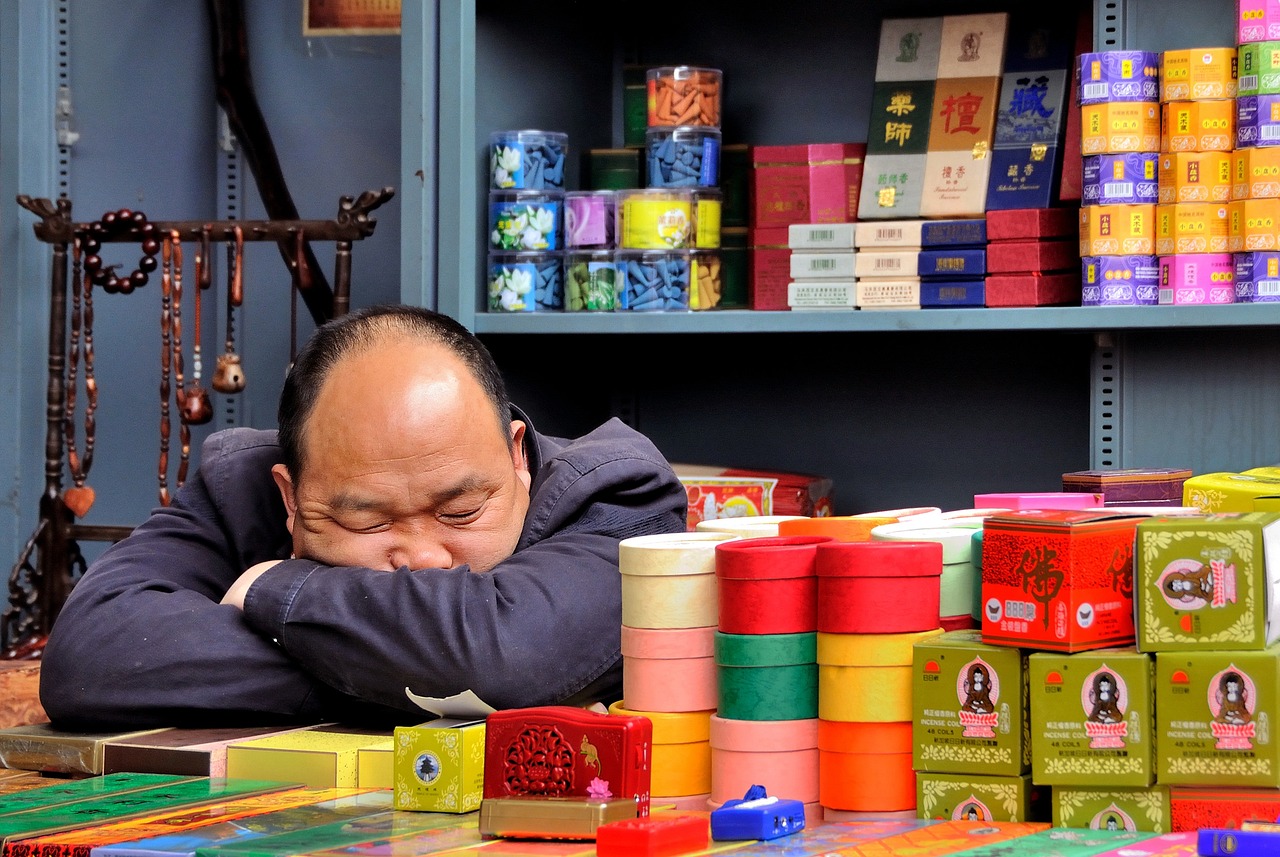
Reducing Noise and Light Pollution
Getting a good night's sleep can sometimes feel like an uphill battle, especially when the world outside your window refuses to quiet down. Noise and light pollution are two of the most common culprits that can disrupt our sleep cycle and impact our overall sense of safety and comfort. Imagine trying to drift off to sleep while the sounds of honking cars, barking dogs, or loud music invade your personal sanctuary. It’s enough to make anyone toss and turn!
To combat these disturbances, it's essential to create an environment that promotes tranquility. Start by considering the source of noise. If you live in a bustling urban area, the sounds of city life might be inevitable. However, there are several strategies you can implement to minimize their impact:
- Soundproofing: Invest in soundproof curtains or window inserts that can significantly reduce outside noise. These products are designed to block out sound waves, making your bedroom a more peaceful place.
- White Noise Machines: These devices can mask disruptive sounds with soothing background noise. Whether it's the sound of gentle rain or ocean waves, white noise can help lull you to sleep.
- Earplugs: A simple yet effective solution, earplugs can block out unwanted noise, allowing you to focus on your sleep.
Now, let’s talk about light pollution. Just as noise can keep you awake, bright lights can interfere with your body's natural sleep-wake cycle. Exposure to artificial light, especially blue light emitted by screens, can trick your brain into thinking it’s still daytime. To combat this, consider the following:
- Blackout Curtains: These can help create a dark environment conducive to sleep, especially if you live in an area with streetlights or other bright sources of light.
- Dim Lighting: Use soft, warm lighting in your bedroom to create a calming atmosphere. Avoid bright, harsh lights in the evening to signal to your body that it's time to wind down.
- Screen Time Management: Limit screen time at least an hour before bed. Instead, opt for reading a book or practicing relaxation techniques to prepare your mind for sleep.
By taking these steps, you can significantly enhance your sleep quality and, in turn, improve your overall sense of safety and well-being. Remember, a peaceful mind is much more likely to find rest, and creating a serene sleep environment is a crucial part of that equation.
Q1: How does noise pollution affect sleep quality?
A1: Noise pollution can disrupt the sleep cycle, leading to fragmented sleep and increased awakenings during the night, which ultimately affects overall health and well-being.
Q2: What are the best ways to block out light while sleeping?
A2: Using blackout curtains, wearing an eye mask, and minimizing exposure to screens before bedtime can help create a dark environment that promotes better sleep.
Q3: Can white noise help with anxiety?
A3: Yes, white noise can create a calming environment that helps reduce anxiety levels by masking distracting sounds and promoting relaxation.
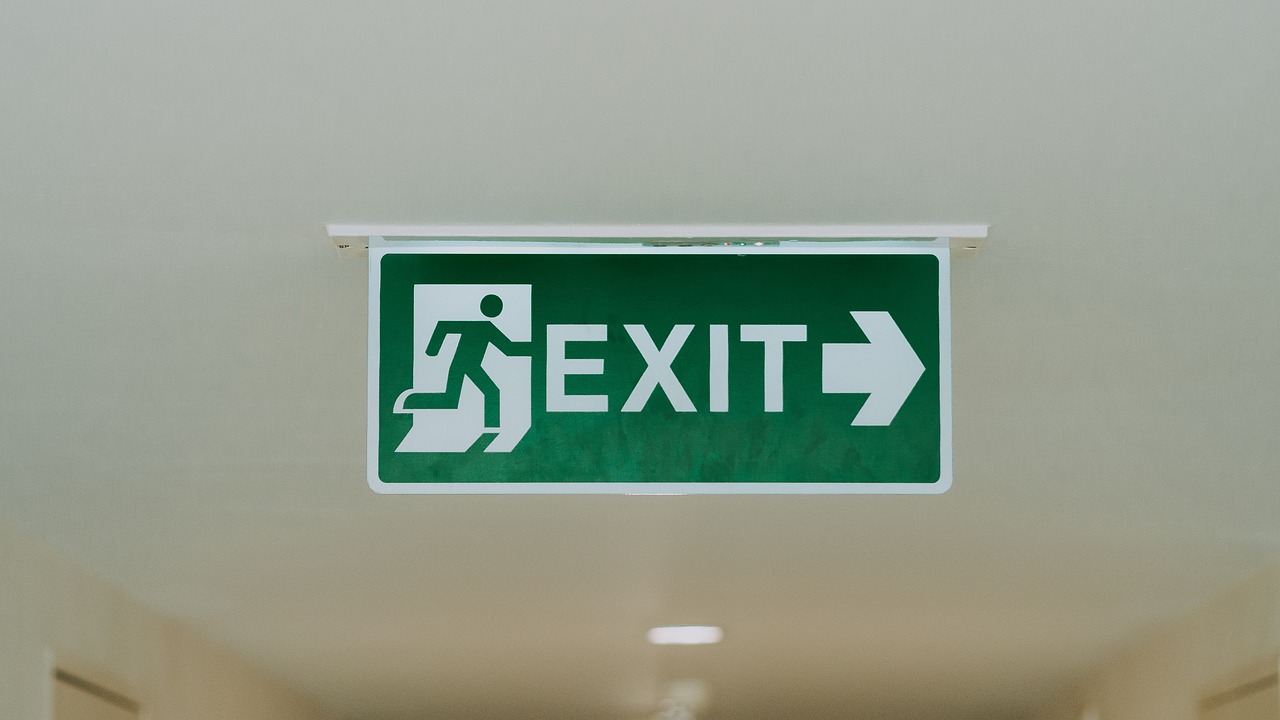
Utilizing Technology for Safety
In today's fast-paced world, technology plays a pivotal role in enhancing our personal safety, which in turn can significantly improve our sleep quality. Imagine a scenario where you can monitor your home environment, receive alerts about potential threats, and even control your sleep settings—all from the palm of your hand! The integration of smart home devices and safety applications allows us to create a secure atmosphere, fostering a sense of safety that is essential for restful sleep.
One of the most effective ways to utilize technology for safety is through the use of smart security systems. These systems often include features such as motion detectors, surveillance cameras, and alarms that can be accessed remotely via smartphone apps. This means you can check in on your home while you’re away or even while you’re in bed, providing peace of mind that enhances your ability to relax and drift off to sleep. The mere knowledge that you are being monitored can significantly reduce anxiety and improve your overall sense of security.
Moreover, smart lighting systems can also contribute to a safer sleeping environment. For instance, you can program your lights to mimic natural light patterns, aiding your body's circadian rhythm. This not only helps you fall asleep faster but also ensures that you wake up feeling refreshed. Additionally, having lights that can be controlled remotely allows you to illuminate your surroundings when you hear an unexpected noise, reducing the fear of the unknown.
Another innovative approach is the use of sleep tracking technology. Many wearable devices and apps monitor your sleep patterns, providing insights into your sleep quality and duration. This data can help you identify factors that may be disrupting your sleep, including environmental disturbances or anxiety triggers. By understanding your sleep cycle better, you can make informed decisions about your bedtime routine, ultimately leading to a more restful night.
To further enhance your safety, consider integrating smart home assistants into your nightly routine. These devices can help you manage your home environment by controlling locks, lights, and alarms with simple voice commands. For example, you can say, “Goodnight,” and the assistant can lock your doors, turn off the lights, and set your thermostat to a comfortable temperature—all while you settle into bed. This seamless integration of technology not only boosts your personal safety but also establishes a calming bedtime atmosphere.
In summary, utilizing technology for personal safety is not just about having fancy gadgets; it's about creating a holistic environment that supports your well-being. By leveraging smart home devices, sleep tracking technology, and voice-activated assistants, you can cultivate a secure space that promotes restorative sleep. So, why not embrace the tools at your disposal? After all, a safe home is a happy home, and a happy home leads to sweet dreams!
- How can smart home devices improve my sleep?
Smart home devices can help create a secure environment, reduce disturbances, and even assist with sleep tracking, all of which contribute to better sleep quality. - Are sleep tracking devices worth it?
Yes, they provide valuable insights into your sleep patterns, helping you identify what may be affecting your rest and allowing you to make necessary adjustments. - What should I look for in a home security system?
Look for features like remote access, motion detection, surveillance cameras, and integration with other smart devices to enhance your safety effectively. - Can technology help reduce anxiety at night?
Absolutely! Features like smart lighting and security alerts can help alleviate fears and promote a sense of safety, making it easier to relax and fall asleep.
Frequently Asked Questions
- How does personal safety affect sleep quality?
Personal safety plays a vital role in determining how well we sleep. When we feel secure in our environment, our bodies can relax, allowing us to enter deeper stages of sleep. Conversely, feelings of insecurity or fear can lead to restless nights, tossing and turning as our minds remain alert to potential threats.
- What are the different stages of sleep and their importance?
Sleep consists of several stages, primarily categorized into REM (Rapid Eye Movement) and non-REM sleep. Each stage serves a unique purpose: non-REM sleep is crucial for physical restoration and recovery, while REM sleep is essential for emotional processing and cognitive function. Both stages are necessary for a balanced and restorative sleep cycle.
- How can sleep disorders impact feelings of safety?
Sleep disorders, such as insomnia or sleep apnea, can significantly affect our perception of safety. They often lead to excessive daytime fatigue, irritability, and heightened anxiety, which can create a cycle of worry. This cycle can make individuals feel more vulnerable, ultimately impacting their overall sense of security.
- What can I do to create a safe sleep environment?
Creating a safe sleep environment involves several key elements. Start by ensuring your bedroom is dark, quiet, and at a comfortable temperature. Consider using blackout curtains, white noise machines, or calming scents to promote relaxation. Additionally, decluttering your space can contribute to a more peaceful atmosphere.
- Are there any technologies that can enhance personal safety while sleeping?
Yes! There are various technologies designed to enhance personal safety and promote better sleep. Smart home devices, such as security cameras and alarm systems, can provide peace of mind. Additionally, sleep tracking apps can help monitor your sleep patterns, allowing you to make adjustments for improved rest.
- How can I minimize noise and light pollution in my bedroom?
Minimizing noise and light pollution is essential for a restful night’s sleep. Use earplugs or white noise machines to drown out disruptive sounds. For light, consider blackout curtains or sleep masks to block out any unwanted illumination. These simple changes can significantly improve your sleep quality.






